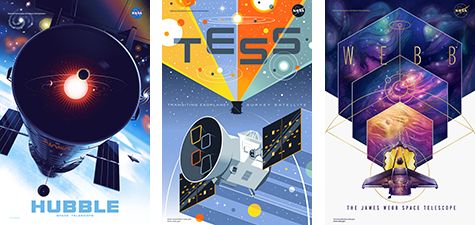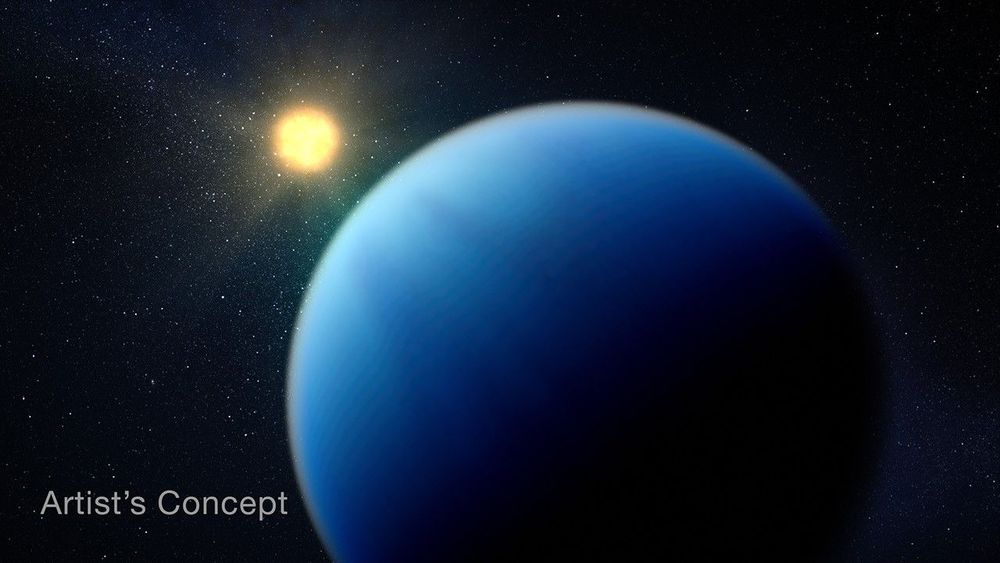Tuesday, May 13, 2025
03:30 PM - 05:00 PM
ASD Colloquium Series
Local Dwarf Galaxies as Laboratories to Understand Massive Stars and the ISM in the Early Universe
Grace Telford (Princeton University)
Feedback from low-metallicity massive stars regulates the evolution of both dwarf and high-redshift galaxies. To understand those processes requires robust models of the metal-poor ISM in which stars form and of massive stars' winds and ionizing spectra. Yet, these models remain entirely theoretical and uncertain due to a lack of observational constraints in the extremely low-metallicity regime. In this talk, I will present a suite of JWST, HST, and Keck observations of the nearby 3% Solar metallicity galaxy Leo P. First, I will describe novel constraints on the wind properties and ionizing spectrum of the galaxy's only O-type star from modeling HST/COS and Keck/KCWI spectroscopy. This star is part of the Treasury of Extremely Metal-Poor O Stars (TEMPOS), a Large Treasury HST program that will extend this initial analysis to a much larger sample at ~5-10% Solar metallicity. I will then present new JWST/MIRI-MRS observations of Leo P, which enabled the first detection of cold molecular hydrogen at such low metallicity via rotationally excited emission from the photodissociation region illuminated by the O star. Our detailed understanding of that star's UV radiation from the HST data constrains the temperature and mass of the detected molecular hydrogen, providing a benchmark for models of the ISM at the very low metallicities typical at high redshift. Leo P showcases the potential of the metal-poor dwarf galaxies in our backyard to inform models of early galaxies.
Read more about this event Grace Telford (Princeton University)
Feedback from low-metallicity massive stars regulates the evolution of both dwarf and high-redshift galaxies. To understand those processes requires robust models of the metal-poor ISM in which stars form and of massive stars' winds and ionizing spectra. Yet, these models remain entirely theoretical and uncertain due to a lack of observational constraints in the extremely low-metallicity regime. In this talk, I will present a suite of JWST, HST, and Keck observations of the nearby 3% Solar metallicity galaxy Leo P. First, I will describe novel constraints on the wind properties and ionizing spectrum of the galaxy's only O-type star from modeling HST/COS and Keck/KCWI spectroscopy. This star is part of the Treasury of Extremely Metal-Poor O Stars (TEMPOS), a Large Treasury HST program that will extend this initial analysis to a much larger sample at ~5-10% Solar metallicity. I will then present new JWST/MIRI-MRS observations of Leo P, which enabled the first detection of cold molecular hydrogen at such low metallicity via rotationally excited emission from the photodissociation region illuminated by the O star. Our detailed understanding of that star's UV radiation from the HST data constrains the temperature and mass of the detected molecular hydrogen, providing a benchmark for models of the ISM at the very low metallicities typical at high redshift. Leo P showcases the potential of the metal-poor dwarf galaxies in our backyard to inform models of early galaxies.
Monday, May 19, 2025
01:00 PM - 03:30 PM
NASA-GSFC Post-bac Research Symposium
We would like to invite you to the annual NASA-PEER Post-bac Symposium! Over the past year, our cohort of post-bac researchers have been conducting research on exciting projects including studying our own lunar surface, distant galaxies, and the early universe.
To celebrate what the post-bacs have accomplished, NASA-PEER is hosting the second annual Post-bac Research Symposium. The event will begin with short talks where each post-bac will give an overview of their research, followed by a poster session with refreshments. You are free to come for the entire event or drop-by as your schedule allows.
We hope you come to support these early career researchers beginning their science careers at Goddard.
Read more about this event To celebrate what the post-bacs have accomplished, NASA-PEER is hosting the second annual Post-bac Research Symposium. The event will begin with short talks where each post-bac will give an overview of their research, followed by a poster session with refreshments. You are free to come for the entire event or drop-by as your schedule allows.
We hope you come to support these early career researchers beginning their science careers at Goddard.
Tuesday, May 20, 2025
03:30 PM - 05:00 PM
ASD Colloquium Series
Local Dwarf Galaxies as Laboratories to Understand Massive Stars and the ISM in the Early Universe
Grace Telford (Princeton University)
Feedback from low-metallicity massive stars regulates the evolution of both dwarf and high-redshift galaxies. To understand those processes requires robust models of the metal-poor ISM in which stars form and of massive stars' winds and ionizing spectra. Yet, these models remain entirely theoretical and uncertain due to a lack of observational constraints in the extremely low-metallicity regime. In this talk, I will present a suite of JWST, HST, and Keck observations of the nearby 3% Solar metallicity galaxy Leo P. First, I will describe novel constraints on the wind properties and ionizing spectrum of the galaxy's only O-type star from modeling HST/COS and Keck/KCWI spectroscopy. This star is part of the Treasury of Extremely Metal-Poor O Stars (TEMPOS), a Large Treasury HST program that will extend this initial analysis to a much larger sample at ~5-10% Solar metallicity. I will then present new JWST/MIRI-MRS observations of Leo P, which enabled the first detection of cold molecular hydrogen at such low metallicity via rotationally excited emission from the photodissociation region illuminated by the O star. Our detailed understanding of that star's UV radiation from the HST data constrains the temperature and mass of the detected molecular hydrogen, providing a benchmark for models of the ISM at the very low metallicities typical at high redshift. Leo P showcases the potential of the metal-poor dwarf galaxies in our backyard to inform models of early galaxies.
Read more about this event Grace Telford (Princeton University)
Feedback from low-metallicity massive stars regulates the evolution of both dwarf and high-redshift galaxies. To understand those processes requires robust models of the metal-poor ISM in which stars form and of massive stars' winds and ionizing spectra. Yet, these models remain entirely theoretical and uncertain due to a lack of observational constraints in the extremely low-metallicity regime. In this talk, I will present a suite of JWST, HST, and Keck observations of the nearby 3% Solar metallicity galaxy Leo P. First, I will describe novel constraints on the wind properties and ionizing spectrum of the galaxy's only O-type star from modeling HST/COS and Keck/KCWI spectroscopy. This star is part of the Treasury of Extremely Metal-Poor O Stars (TEMPOS), a Large Treasury HST program that will extend this initial analysis to a much larger sample at ~5-10% Solar metallicity. I will then present new JWST/MIRI-MRS observations of Leo P, which enabled the first detection of cold molecular hydrogen at such low metallicity via rotationally excited emission from the photodissociation region illuminated by the O star. Our detailed understanding of that star's UV radiation from the HST data constrains the temperature and mass of the detected molecular hydrogen, providing a benchmark for models of the ISM at the very low metallicities typical at high redshift. Leo P showcases the potential of the metal-poor dwarf galaxies in our backyard to inform models of early galaxies.
Tuesday, May 27, 2025
03:30 PM - 05:00 PM
ASD Colloquium Series
Local Dwarf Galaxies as Laboratories to Understand Massive Stars and the ISM in the Early Universe
Grace Telford (Princeton University)
Feedback from low-metallicity massive stars regulates the evolution of both dwarf and high-redshift galaxies. To understand those processes requires robust models of the metal-poor ISM in which stars form and of massive stars' winds and ionizing spectra. Yet, these models remain entirely theoretical and uncertain due to a lack of observational constraints in the extremely low-metallicity regime. In this talk, I will present a suite of JWST, HST, and Keck observations of the nearby 3% Solar metallicity galaxy Leo P. First, I will describe novel constraints on the wind properties and ionizing spectrum of the galaxy's only O-type star from modeling HST/COS and Keck/KCWI spectroscopy. This star is part of the Treasury of Extremely Metal-Poor O Stars (TEMPOS), a Large Treasury HST program that will extend this initial analysis to a much larger sample at ~5-10% Solar metallicity. I will then present new JWST/MIRI-MRS observations of Leo P, which enabled the first detection of cold molecular hydrogen at such low metallicity via rotationally excited emission from the photodissociation region illuminated by the O star. Our detailed understanding of that star's UV radiation from the HST data constrains the temperature and mass of the detected molecular hydrogen, providing a benchmark for models of the ISM at the very low metallicities typical at high redshift. Leo P showcases the potential of the metal-poor dwarf galaxies in our backyard to inform models of early galaxies.
Read more about this event Grace Telford (Princeton University)
Feedback from low-metallicity massive stars regulates the evolution of both dwarf and high-redshift galaxies. To understand those processes requires robust models of the metal-poor ISM in which stars form and of massive stars' winds and ionizing spectra. Yet, these models remain entirely theoretical and uncertain due to a lack of observational constraints in the extremely low-metallicity regime. In this talk, I will present a suite of JWST, HST, and Keck observations of the nearby 3% Solar metallicity galaxy Leo P. First, I will describe novel constraints on the wind properties and ionizing spectrum of the galaxy's only O-type star from modeling HST/COS and Keck/KCWI spectroscopy. This star is part of the Treasury of Extremely Metal-Poor O Stars (TEMPOS), a Large Treasury HST program that will extend this initial analysis to a much larger sample at ~5-10% Solar metallicity. I will then present new JWST/MIRI-MRS observations of Leo P, which enabled the first detection of cold molecular hydrogen at such low metallicity via rotationally excited emission from the photodissociation region illuminated by the O star. Our detailed understanding of that star's UV radiation from the HST data constrains the temperature and mass of the detected molecular hydrogen, providing a benchmark for models of the ISM at the very low metallicities typical at high redshift. Leo P showcases the potential of the metal-poor dwarf galaxies in our backyard to inform models of early galaxies.
Tuesday, June 03, 2025
03:30 PM - 05:00 PM
ASD Colloquium Series
Local Dwarf Galaxies as Laboratories to Understand Massive Stars and the ISM in the Early Universe
Grace Telford (Princeton University)
Feedback from low-metallicity massive stars regulates the evolution of both dwarf and high-redshift galaxies. To understand those processes requires robust models of the metal-poor ISM in which stars form and of massive stars' winds and ionizing spectra. Yet, these models remain entirely theoretical and uncertain due to a lack of observational constraints in the extremely low-metallicity regime. In this talk, I will present a suite of JWST, HST, and Keck observations of the nearby 3% Solar metallicity galaxy Leo P. First, I will describe novel constraints on the wind properties and ionizing spectrum of the galaxy's only O-type star from modeling HST/COS and Keck/KCWI spectroscopy. This star is part of the Treasury of Extremely Metal-Poor O Stars (TEMPOS), a Large Treasury HST program that will extend this initial analysis to a much larger sample at ~5-10% Solar metallicity. I will then present new JWST/MIRI-MRS observations of Leo P, which enabled the first detection of cold molecular hydrogen at such low metallicity via rotationally excited emission from the photodissociation region illuminated by the O star. Our detailed understanding of that star's UV radiation from the HST data constrains the temperature and mass of the detected molecular hydrogen, providing a benchmark for models of the ISM at the very low metallicities typical at high redshift. Leo P showcases the potential of the metal-poor dwarf galaxies in our backyard to inform models of early galaxies.
Read more about this event Grace Telford (Princeton University)
Feedback from low-metallicity massive stars regulates the evolution of both dwarf and high-redshift galaxies. To understand those processes requires robust models of the metal-poor ISM in which stars form and of massive stars' winds and ionizing spectra. Yet, these models remain entirely theoretical and uncertain due to a lack of observational constraints in the extremely low-metallicity regime. In this talk, I will present a suite of JWST, HST, and Keck observations of the nearby 3% Solar metallicity galaxy Leo P. First, I will describe novel constraints on the wind properties and ionizing spectrum of the galaxy's only O-type star from modeling HST/COS and Keck/KCWI spectroscopy. This star is part of the Treasury of Extremely Metal-Poor O Stars (TEMPOS), a Large Treasury HST program that will extend this initial analysis to a much larger sample at ~5-10% Solar metallicity. I will then present new JWST/MIRI-MRS observations of Leo P, which enabled the first detection of cold molecular hydrogen at such low metallicity via rotationally excited emission from the photodissociation region illuminated by the O star. Our detailed understanding of that star's UV radiation from the HST data constrains the temperature and mass of the detected molecular hydrogen, providing a benchmark for models of the ISM at the very low metallicities typical at high redshift. Leo P showcases the potential of the metal-poor dwarf galaxies in our backyard to inform models of early galaxies.

Mission Posters
Please check out these awesome mission posters for the Hubble Space Telescope, the Transiting Exoplanet Survey Satellite (TESS) and the James Webb Space Telescope missions.Featured Video
Celebrating 30 years in orbit, the Hubble Space Telescope has revealed astonishing secrets about our universe. Yet, while its most famous pictures may reveal galaxies and nebulas across the cosmos, it’s also unlocked secrets here in our own solar system.


